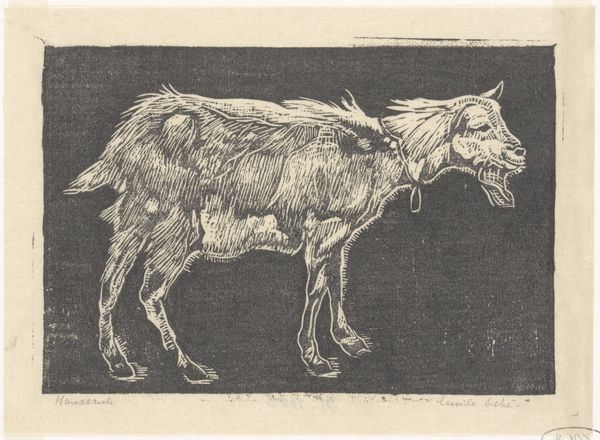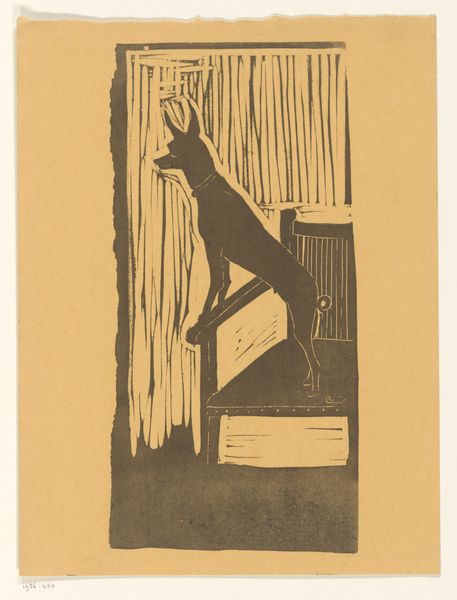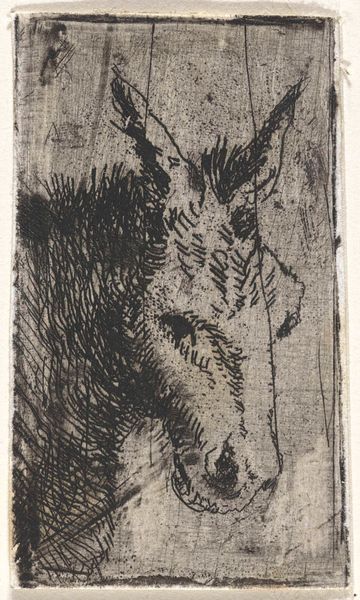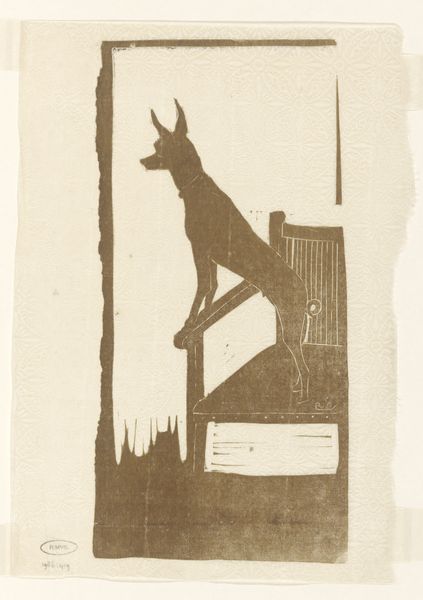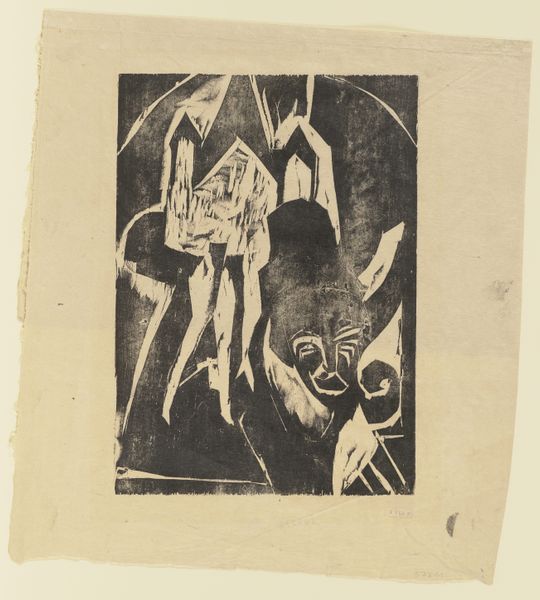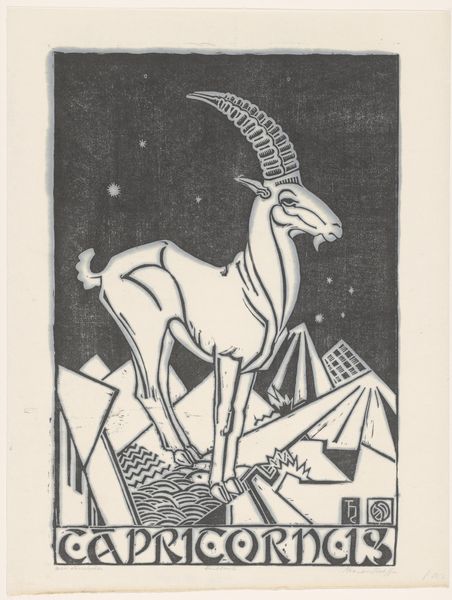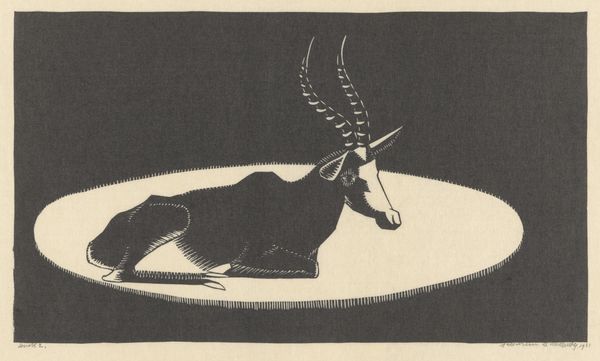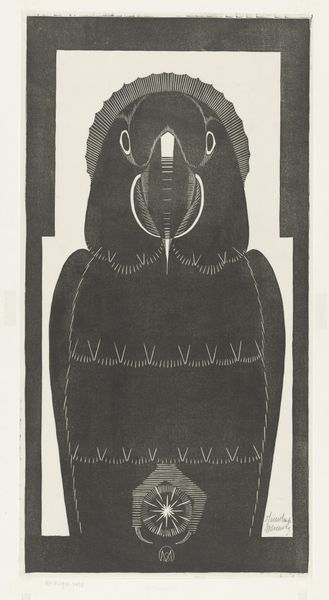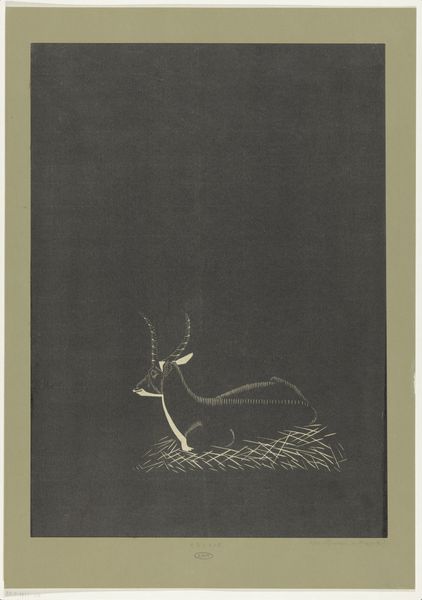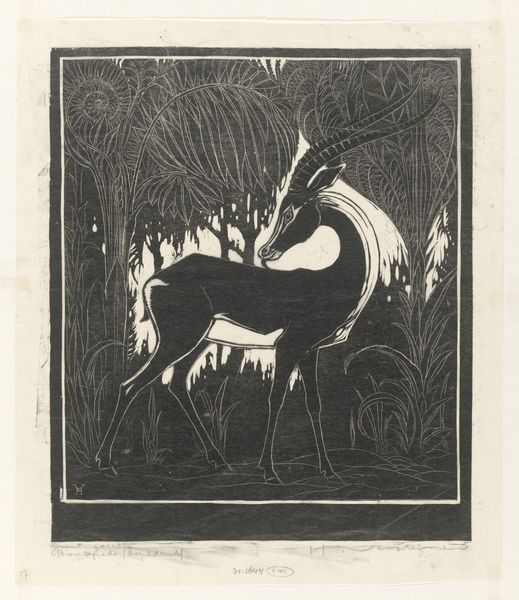
drawing, print, woodcut
#
drawing
#
animal
# print
#
pen sketch
#
old engraving style
#
geometric
#
woodcut
#
line
Dimensions: height 290 mm, width 180 mm
Copyright: Rijks Museum: Open Domain
Curator: Immediately, I see such incredible isolation. It feels dark, heavy, with this geometric cage contrasting the delicate rendering of the animal's fur. Editor: Let's take a closer look at this intriguing piece. What you’re describing is "Markhorgeit (Zittend hert in een kooi)", which translates to Markhor Goat (Sitting Deer in a Cage), created in 1913 by Samuel Jessurun de Mesquita. The work is a woodcut print. Curator: A deer in a cage… there's a haunting beauty in that. Mesquita really captured the sadness in its eyes. The horns seem to strain upward as if yearning for freedom. It is powerful, the black and white adding drama to the visual narrative. Editor: The cage motif is potent, and given the context of Mesquita's life, a Dutch Jewish artist who would later perish in Auschwitz, it's impossible not to read that sense of confinement on a sociopolitical level. The very precise linework emphasizes an "old engraving style" that accentuates an animal imprisoned. Curator: Yes, absolutely. Art can sometimes feel like a haunting echo of a life. You can just see it! Do you see the animal in that cage looking for an escape? Editor: Museums and institutions play a vital role in preserving artworks as both testaments to creative innovation, but they are sometimes a stark representation of world issues. Considering its creation, and indeed its modern relevance, that cage stands as a painful symbol of institutionalized prejudice and power structures. The power is a sad reminder of how political art can be. Curator: Isn’t it interesting, this goat also projects something universal, beyond those specific historical cruelties, which allows everyone to have that reaction, to find resonance in that struggle for freedom, even beyond its initial historical reading. Editor: Absolutely, art acts as a time capsule. Pieces like "Markhorgeit" not only echo personal or specific historical tragedies but, like all timeless art, invites endless reflection. Curator: Yes, endless interpretation… and maybe that is why it's art!
Comments
No comments
Be the first to comment and join the conversation on the ultimate creative platform.


